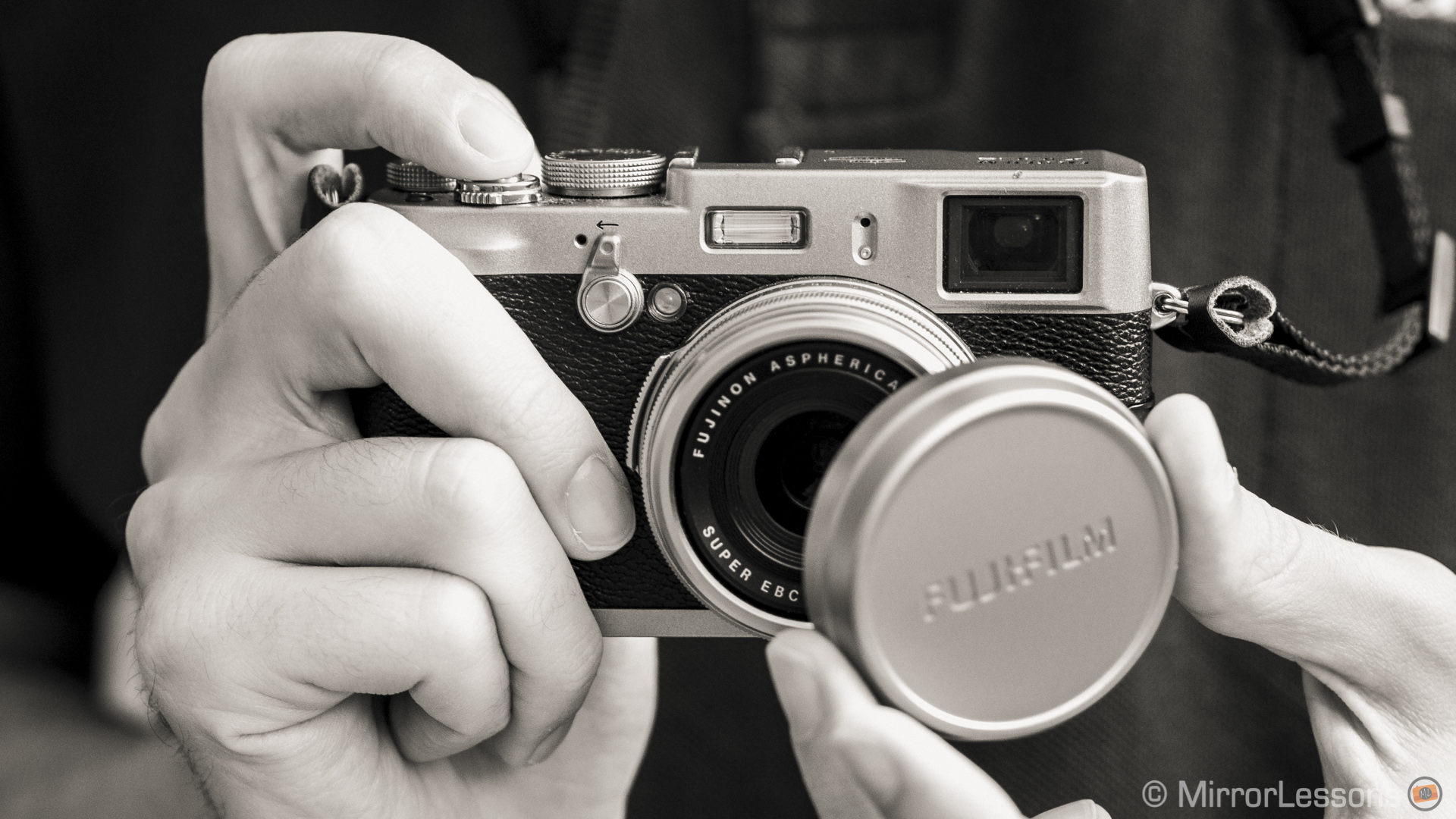Back in July, I published the first article in the Mirrorless on the Job series. In the article, I shared my experience as a professional photographer who uses mirrorless cameras for work with a specific focus on the OM-D E-M5 by Olympus.
As you can guess from the title of this second episode, I also use the Fujifilm X100s on the job, but in this case I have a different story to tell. While the E-M5 switch was premeditated because I was looking for an alternative to my DSLR, the incorporation of the Fuji into my workflow was almost a natural yet unexpected transition. When I first bought it, I was sure that I would only use it for personal purposes but I ended up carrying it with me at all times, often using it alongside my E-M5 as a second body and sometimes even as my primary body for some assignments. This unexpected combo has given me a lot of surprise and satisfaction in the year I’ve been using it.
So how does the X100s complete the gear I require for my work?
The purpose of a second body

Usually photographers choose to use two bodies (or even three) to avoid changing lenses every time they need a different focal length. I have seen many photographers carrying one body with a 24-70mm f/2.8 and another with a 70-200mm f/2.8. Another popular combo is the multi purpose zoom on one and the fast prime on the other.
A second body can also be a good backup. Imagine if you had an assignment far from home and for some reason one of the two bodies stopped working. You would still be able to continue with your photo shoot with the one body. Not that this happens often (I hope never) but from a professional point of view, it is always a good thing to consider. There are also photographers who use two systems (like DSLR and medium format), but this is because they may engage in very different types of photographic work – they won’t necessarily use them together.
In my DSLR experience, I used to have an old Nikon D700 with a Nikon D90 as a backup. I would use the D90’s smaller sensor (DX) with the 80-200mm to get some extra length. The bottom line is that there are many reasons to have a second body, but most of the time we instinctively pair two similar or identical bodies. For instance, on several occasions, I pair my E-M5 with the Pen E-P5 as they share the same exact sensor, and recently even with the Panasonic GX7, which I’ve found more portable than the E-P5 thanks to its built-in EVF.
But there is nothing wrong with choosing a second body which differs from your main body; a second body you can use for specific situations or assignments.
This kind of second body isn’t something that you integrate with the rest of your gear but use as an alternative, to obtain another perspective which isn’t only tied to the use of various lenses. It is a pure personal choice; something different that you can add to your photo session for your personal satisfaction and for the final result. This is what I get with the Fujifilm X100s.
The X100s is pure instinct

The first thing I like about the X100s more than any other camera is its straightforwardness. It brings all operations down to minimal (and manageable) level thanks to its shutter speed dial and aperture ring on the lens, similar to old rangefinder cameras. I actually love to work in Aperture priority mode with the exposure compensation dial. ISO looks good no matter what value I set it to, which is why I often leave it in Auto mode. Since I have been using this camera for a while now, I’ve also saved my favourite settings for colour or black and white in case I want to use the out-of-camera JPGs. Last but not least, it has a fixed prime 23mm lens (35mm equivalent in full frame format), so I don’t have to worry about which lens to use.
With the Fuji X100s, I just pick it up, turn it on and start shooting. I don’t have to care about anything else.
This approach lets my instinct lead the operation. I see something, I take the shot. I rarely think for a long time about the composition once my eye has met the viewfinder – it all happens before. My eye catches something, my body makes a move if I need to get closer or if a different perspective might be better, and I bring the camera to my eye. Click.

This is also why the X100s is rarely the first camera I pull out of my bag when start working.
It is the camera that I pull out when I think “Okay, what more can I bring to the story I’m documenting?”.
It could be at the end of the day, in the middle, when I go back to the same place for a second visit or when I have enough pictures taken with the other camera and just want to add something extra.

I think this also explains why the X100s is the camera I use the most for my personal photography. It is the camera that I always have with me. I use it for work like I use it on the streets for myself. Once I have enough pictures on my memory card of the mayor, the director, or the prize being given at an event with my main body, I can then enjoy the last half hour or even couple of minutes taking pictures as I please with the X100s. Sometimes I come back home with something unexpected, sometimes with a bunch of shots destined for the bin. It is an extra. A pinch of personal pleasure in a photo shoot which, after the 100th time, can sometimes be boring.




The X100s mingles with the people
There’s another factor that makes me prefer the X100s to other bodies as a second camera, and that is its fixed prime lens. What I like about a fixed lens is that it requires me to constantly move to find the right composition. And I’ve found that by moving around, I blend in better with the people around me.

My work mainly consists of event reportage, but I always try to capture the perfect moment without being noticed. I take the custom posed photographs when I need to but I prefer to catch fleeting smiles and expressions without people worrying about how they look for the camera. So, when I want to catch something unique and stay close to my subjects, I whip out the X100s. Its compact size and “pancake” lens make it very discreet. If I activate the silent mode, no one hears it. I walk around and take photos in a very natural way. People often don’t even notice me. I compose, I take the shot. Pure instinct. Nothing more.




A 35mm equivalent is the perfect focal length to show what’s around a person or a group of people, not only on the X100s but on any camera using that focal length. I must say that I never had one before buying the X100s. Since I have the X100s, I don’t feel the need to have the same equivalent lens on my E-M5. Having different focal lengths on my two bodies also means that I can assign specific tasks to each.
Of course, I know my X100s and its limits. Especially when shooting people, its 23mm focal length (35mm equivalent lens on full frame format) generates some distortion which can highlight imperfections on people’s faces. This is important to consider if you are shooting weddings for example. But if you are careful, it works very well.

The X100s is also my go-to “backstage” camera.
It is perfect for showing exactly what is going on around the people I have to photograph. But it isn’t only a question of lens length.


As I said, the camera is discreet. People usually feel relaxed with it. I could say the same thing about my E-M5 as it has a similar design, but while its size is way smaller than a DSLR, it is still bigger than the X100s especially with a telephoto lens mounted and flash unit attached to the hot-shoe. So for certain tasks, the X100s also works well as my “introduction” camera. I’d gladly take it behind the stage of a theatrical performance for a few minutes before the beginning and take some backstage shots. The camera is that unobtrusive.

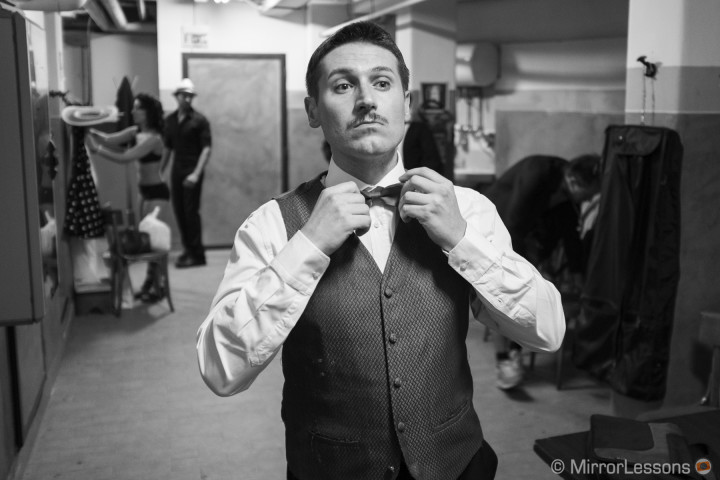
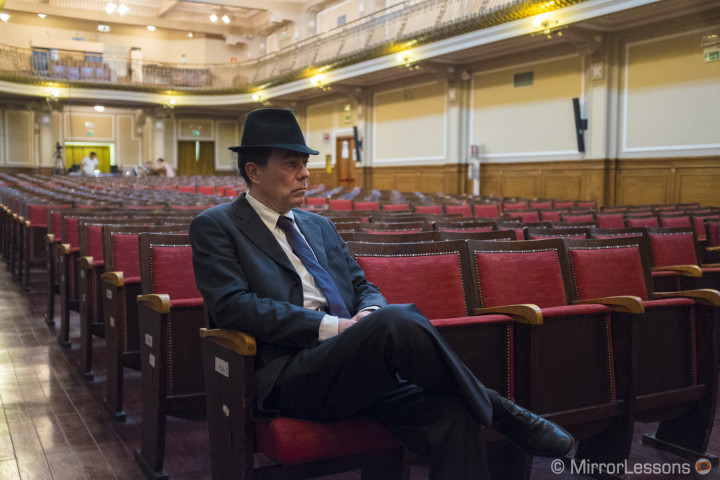
Finally, there are also times when the retro look of the camera initiates a conversation with the person. They often ask me if it is a Leica, or they are just pleased at the thought that I’m still shooting film. One day, when I had to take a quick picture of a film director and his colleague after a presentation at the cinema, they start joking about my camera in a genuine way, and that made the session very easy, fast and enjoyable.

The X100s is also the perfect street companion. Last week, one of my clients asked me to shoot a reportage of a special day where volunteers took a city tour of the run-down and poverty-stricken areas of Turin. For that particular task, I choose to use only the X100s. I didn’t want to carry much gear, and I thought that having one camera with one lens was more than enough and would allow me to observe and work in a discreet way. It was the first assignment where I only used this camera, and this confirmed how much you can do with it, despite the apparent limitations. I cannot think of a more perfect camera for street photography in general.





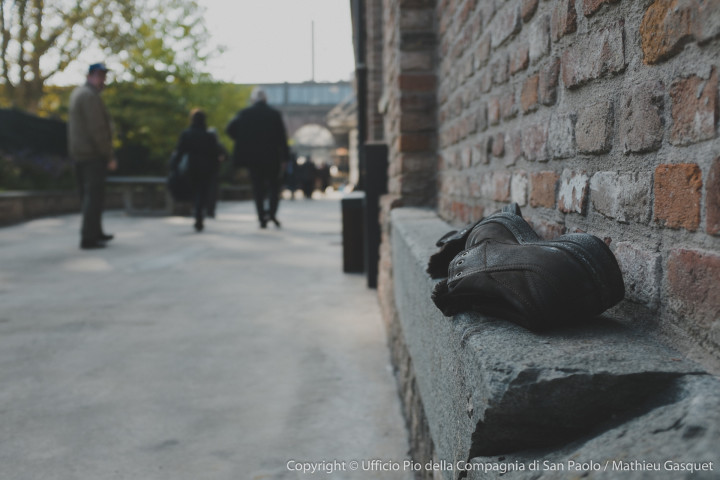
The X100s is extremely versatile if you believe it is
You might find a non-interchangeable prime lens limiting at first, but the more I use it the more versatile it becomes in my hands. More versatile than I’d ever imagined, to be honest. I’ve managed to take a wide variety of photographs, from landscape to portraits and I’ve never felt chained down by it.


I also love using it to capture small details. The combination of the fast aperture and APS-C sized sensor gives me a lot of satisfaction for quick shots.
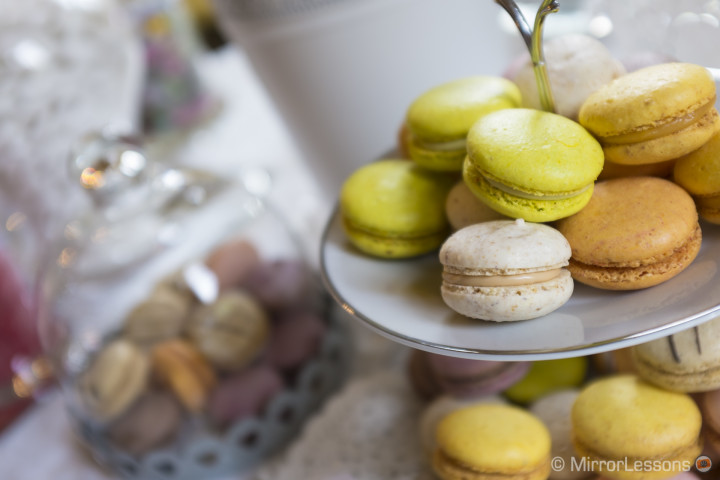


I occasionally take ambient shots with it as well. It is something that I prefer to do with the OM-D and a wide angle lenses but since the image quality of the X100s is amazing, a couple of extra shots with a 35mm equivalent focal length never hurt.


This is another reason I use it for both personal and professional work. I am so familiar with it now that I know exactly how to make its strengths and weaknesses work for me. Its image quality always manages to surprise me. I can trust its JPG engine when I don’t want to think about post-processing and just want to enjoy Fuji’s unique film-like colours.

That said, the RAW version of the pictures are great to post-process as well, especially if you want to work with the dynamic range. You lose a little bit of the Fuji colours you find in the JPGs but that also allows me to differentiate my work as well. When I want to concentrate on colours, I use the JPGs. When I want my images to have a different look to Fuji’s film colours, I often use the Huelight picture profile in Lightroom for a better and more natural colour rendering or the Rebecca Lily Pro Set II which has been developed primarily for the Fuji X-trans sensor.

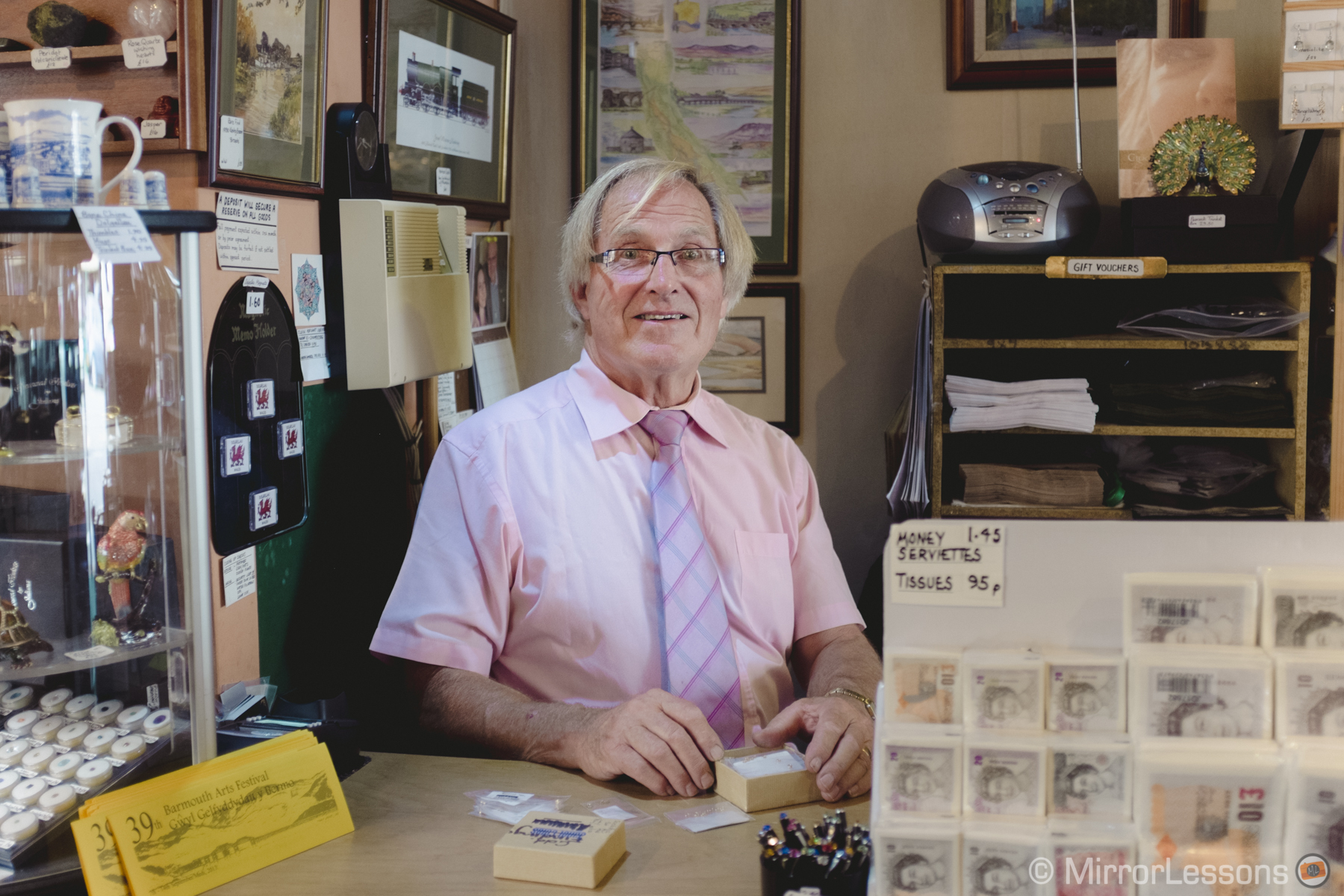
The camera also has many other great features that I love. The incorporated ND filter is amazing when you want a shallow depth of field in bright light. If you combine it with a backlight and flash, you can get some very interesting results.

The only real weakness is the autofocus. The X100s sensor has a hybrid phase/contrast detection AF but it takes time to trust it completely. At the beginning, I used to work in AF-S mode and would always wait for the green rectangle confirmation to appear on the viewfinder. However, doing so often slowed down operations as the camera would sometimes lose the focus once I completely pressed down the shutter release button. Moreover, if you take a second shot, the lens often refocuses completely, making you miss a moment that you wanted to catch right away.
But there are two ways to remedy to this. The first is to take the shot by pressing the shutter release button at 100% right away, or to decide not to wait for the AF lock confirmation. This means trusting the AF entirely and I must say that it works better. Otherwise, you can work in AF-C, where the AF motor remains constantly active and you won’t get the problem of the lens refocusing between one shot and another. It will drain the battery more but that is less of a problem as the X100s battery doesn’t last an entire day anyway. It is always better to have at least two on hand.
A question of balance

This article is based completely on the feeling I have with the camera. It works for me, it might not work for everyone. I always say that there is more than just pure image quality when you choose a camera to work with. The ergonomics, the ease of use, the pleasure you can have derive from a camera is often more important than megapixels and sensor size.
Is the X100s essential? Maybe not, but as long as I enjoy using it, then I’ll say that it is.
The X100s is the most balanced camera I’ve ever had the pleasure of using so far. By balanced, I mean that it represents for me the best mix of quality, compactness and usability. And that’s why I bring it everywhere. It doesn’t come without its faults, but when you really learn how to use it, you realise that it is one of the best tools in its category. It has a fixed non-removable lens, a fact that could seem limiting at first but offers another kind of freedom once you get used to it. For me, it really brings photography back to the basics: point and shoot. And while it cannot become my sole camera body, it represents a great addition to my work, even if it is a matter of obtaining that one extra special shot.
How about you? Do you have a camera that has almost become an extension of your body like the X100s has become for me? 🙂
You can check out my other articles about the Fujifilm X100s below:
